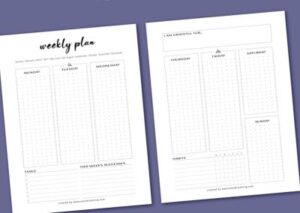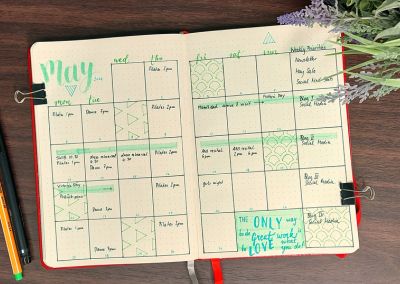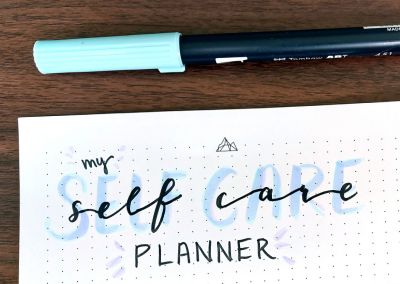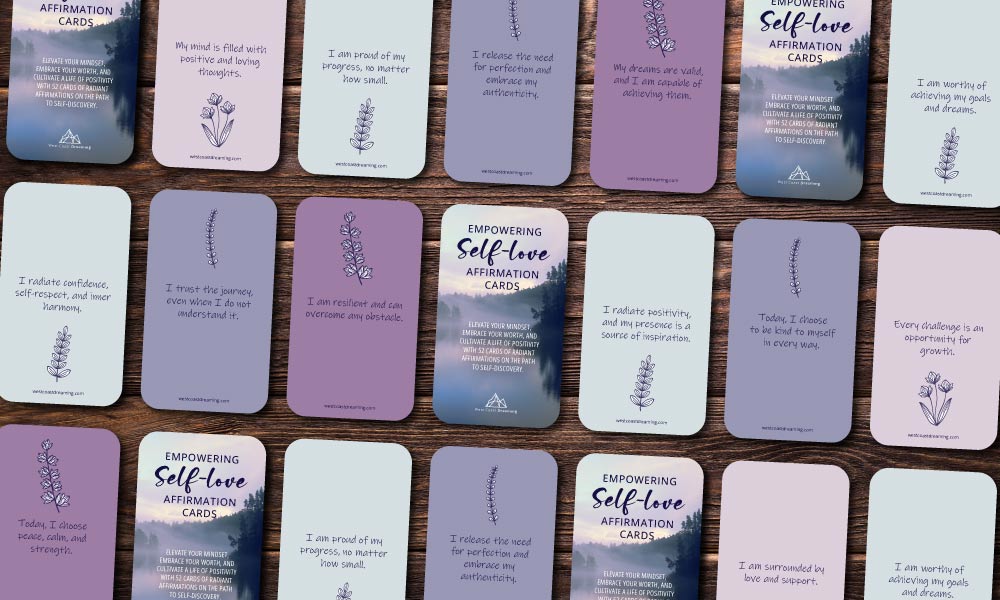
by Nikola | Oct 26, 2023 | Bullet Journaling
In the hustle and bustle of our daily lives, it’s easy to lose sight of our goals, dreams, and the path to self-discovery. This is where journaling comes to the rescue. Journaling prompts, in particular, are potent tools that can help you unlock your potential, set meaningful goals, and chart your path to success. Let’s delve into the world of journaling prompts, discussing their incredible benefits and providing you with techniques to kickstart your journey. Plus, we’ll introduce you to the ideal tool for this practice—dot-grid journals.
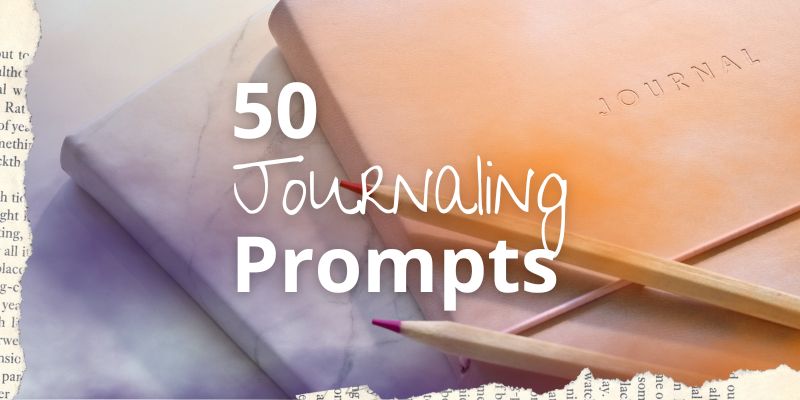
Journaling Prompts: A Powerhouse for Personal Growth
Journaling is not just a trendy self-help activity; it’s a scientifically proven method for personal growth and well-being. Numerous studies have highlighted its positive impact on mental and emotional health.
Benefits of Journaling
- Improved Emotional Well-being: A study published in the journal “Advances in Psychiatric Treatment” (National Center for Biotechnology Information) found that expressive writing, such as journaling, can help individuals manage and reduce symptoms of depression and anxiety.
- Stress Reduction: The American Psychological Association (APA) suggests journaling about stressful events can reduce stress levels. It provides an emotional outlet and helps individuals make sense of their feelings.
- Enhanced Cognitive Function: Research conducted at the University of California, Irvine, demonstrated that expressive writing can improve working memory and problem-solving skills, contributing to cognitive growth.
- Improved Goal Achievement: A study published in “Psychological Science” (Association for Psychological Science) revealed that individuals who wrote down their goals were likelier to achieve them. Journaling can provide clarity and motivation to work towards your aspirations.
- Better Physical Health: According to Harvard Health Publishing, journaling has been linked to improved immune function and reduced symptoms in conditions like asthma and rheumatoid arthritis. This suggests that journaling may have a positive impact on overall health.
These scientific findings underscore the effectiveness of journaling as a tool for personal growth and well-being. By integrating it into your daily routine, you can harness its benefits and unlock your full potential.
Read more
Whether you are an avid journaler or want to become one, you are not alone. Here are some examples of highly successful people who journal.
Discover here.
Now, let’s explore specific journaling prompts and techniques to help you journey to self-discovery and success.
Unlocking the Power of Journaling Prompts
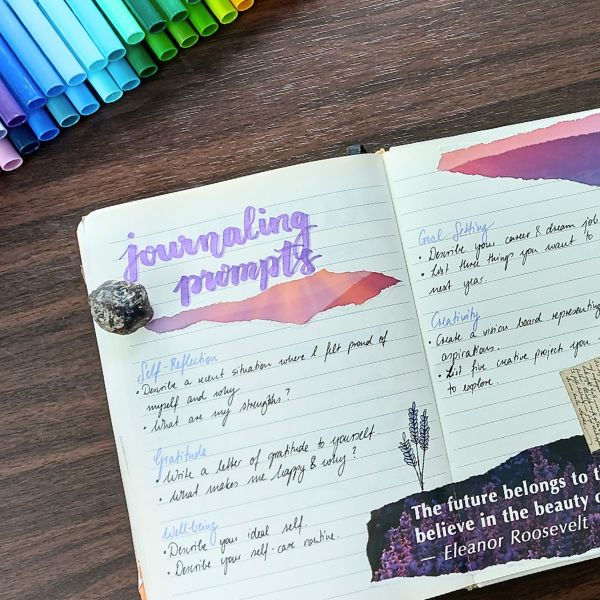
Journaling prompts are like keys that open the door to self-discovery and success. They provide specific questions or statements to respond to, guiding your thoughts and reflections. Here are some journaling prompts and techniques to get you started:
Self-Reflection
- What are my core values, and how do they influence my decisions?
- Describe a recent situation where I felt proud of myself and why.
- Reflect on a challenging moment in my life. What did I learn from it?
- How do I handle stress, and are there healthier coping mechanisms I can adopt?
- What are my strengths, and how can I use them to achieve my goals?
- Write a letter to your past self, offering advice and encouragement.
- Describe someone who significantly impacted your life and what you’ve learned from them.
- What fears or limiting beliefs hold me back, and how can I overcome them?
- Explore a recent mistake or failure. What lessons can I draw from it?
- What does success mean to me, and how do I plan to achieve it?
Gratitude
- List three things you’re grateful for today and explain why.
- Reflect on a person you’re thankful to have in your life and what they bring to it.
- Describe a small moment of joy or beauty you experienced recently.
- What are three aspects of your health and well-being that you appreciate?
- Write a letter of gratitude to yourself for your accomplishments and growth.
- Explore the simple pleasures in your daily life and why they make you happy.
- What opportunities have come your way that you’re thankful for?
- Reflect on a challenging situation that taught you something valuable.
- What lessons have you learned from past hardships that you’re grateful for?
- List ten things about yourself that you appreciate and admire.
Goal Setting
- What are your short-term goals for the next month, and what steps will you take to achieve them?
- Describe your dream career or job. What skills and experiences do you need to reach it?
- Reflect on a significant life goal. What motivates you to pursue it, and how will you measure your progress?
- What personal development goals do you have, and how will they contribute to your overall success?
- List three things you want to achieve in the next year and create a plan to work towards them.
- What habits or behaviours would you like to change or improve for a happier and more successful life?
- Describe a role model or mentor you look up to. What qualities do they have that you want to develop?
- What legacy do you want to leave behind, and how will you work towards it?
- What steps can you take to achieve a healthier work-life balance and well-being?
- Explore your financial goals and the strategies you’ll use to achieve financial success.
Creativity and Self-Expression
- Describe a recent creative project or idea that excites you.
- What are your favourite forms of creative expression, and how do they make you feel?
- Write a short story or poem inspired by a recent experience or emotion.
- Create a vision board in your journal with images and words representing your creative aspirations.
- What role does creativity play in your life, and how can you nurture it further?
- Reflect on a time when you stepped out of your comfort zone creatively. What did you learn?
- Explore a childhood memory related to creativity. How has it influenced you as an adult?
- List five creative projects or hobbies you’d like to explore in the future.
- How can you infuse more creativity into your daily routine and problem-solving?
- Describe a place that inspires your imagination and how you can visit or recreate that environment.
Emotional Well-being
- Explore a recent emotional challenge and how you managed your feelings.
- Write a letter to your younger self, offering comfort and support during a difficult time.
- Describe your ideal self emotionally and the steps to become more like that person.
- Reflect on a relationship that brings you joy and emotional support. What makes it unique?
- Explore a recent moment when you felt genuinely content. What contributed to that feeling?
- Write about a situation that triggers negative emotions and brainstorm healthy coping methods.
- List ten affirmations that boost your emotional well-being, and repeat them daily.
- Describe your self-care routine and the activities that nurture your emotional health.
- Reflect on your boundaries and how to enforce them for healthier relationships.
- What are your strategies for managing stress, anxiety, or difficult emotions?
Dot-Grid Journals: The Perfect Companion
While journaling can be done on any blank paper, dot-grid journals offer a structured yet versatile format. The dots on each page provide a subtle guide for writing and drawing, making them an ideal choice for those who want structure and freedom in their journaling practice. Check out our Companion Journal here.
Incorporating dot-grid journals into your journaling routine can enhance the overall experience, helping you stay organized while allowing your creativity to flow freely.
Conclusion
Journaling prompts are potent tools for personal growth and success. They offer a structured approach to self-discovery, goal setting, and reflection. Integrating dot-grid journals into your practice can take your journaling experience to the next level. So, grab your favourite journal, pick a prompt, and embark on a journey of self-discovery and success today.
Start your journaling journey now and discover a world of opportunities.

by Nikola | Jul 14, 2023 | An Organized Life, Bullet Journaling
We believe that dreams have the power to shape our lives and guide us toward success. However, turning dreams into reality requires more than just wishful thinking. It requires you to think strategically and commit to your goals. In this blog post, we’ll explore five effective goal-setting strategies to help you bridge the gap between your dreams and achievements. So, let’s dive in and start turning your dreams into reality!

Effective Goal-Setting Strategy Step 1
Clarity is Key
The first step toward achieving any goal is to gain clarity about what you truly want. Spend some time reflecting on your dreams and aspirations. Then, ask yourself: What do I truly want? Why do I want it? What does success mean to me? What specific goals will bring me closer to my vision? The more precise and detailed you are, the better. Remember, clarity sets the foundation for success.
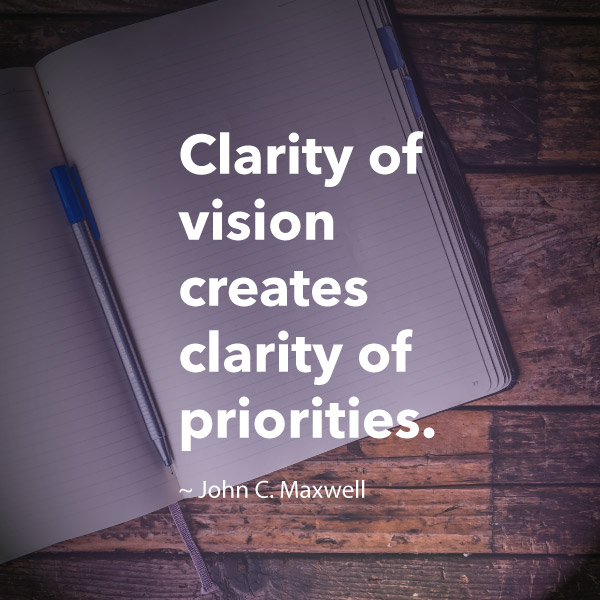
Effective Goal-Setting Strategy Step 2
Make your goals SMART
Once you clearly understand your goals, making them specific, measurable, achievable, relevant and timebound is essential. Instead of saying, “I want to be successful,” consider setting a goal like, “I want to increase my annual revenue by 20% in the next year.” Or redefine “I want to lose weight” to “I want to lose eight to ten pounds within the next two months.” By defining your goals in measurable terms, you provide yourself with a tangible target to work towards, making tracking your progress along the way easier. Check out this article if you want to learn more about SMART goals.
Effective Goal-Setting Strategy Step 3
Create Actionable Plans
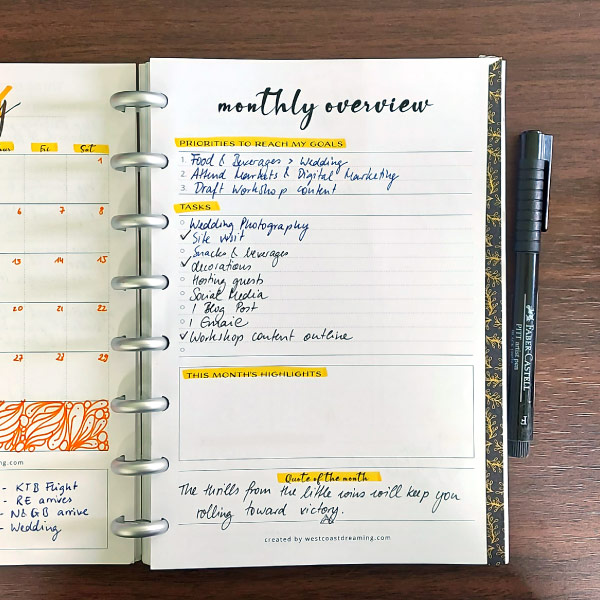
Setting goals without a plan is like setting sail without a map. So, after setting your goals and intentions, you need a plan that you can follow. To ensure success:
- Gather information and resources relevant to your goal. This could involve reading books, attending workshops, or conducting online research to gain knowledge and insights.
- Break down your goal into smaller, manageable and actionable steps. Define specific targets or achievements that will mark your progress along the way.
- Start by identifying the key milestones you need to reach and then outline the specific actions required to achieve each milestone.
Remember to set realistic deadlines for each step and hold yourself accountable.
Here is a sample to illustrate actionable steps (see #2) for the goal:
“I want to lose eight to ten pounds within the next two months.”
Break down your goal into smaller, manageable, and actionable steps:
- Consult a nutritionist to create a personalized meal plan based on your caloric needs and dietary preferences.
- Consult a fitness professional to design a workout plan that suits your fitness level and goals.
- Include cardiovascular exercises (such as brisk walking, jogging, or cycling) and strength training exercises (using weights or bodyweight exercises) in your routine.
- Aim for at least 15-20 minutes of your exercise routine daily, and increase your daily step level to a minimum of 8000 steps per day to boost your metabolism.
- Keep a food journal to record your meals, snacks, and portion sizes.
- Utilize a fitness tracking app or wearable device to monitor your exercise and track calories burned.
- Weigh yourself regularly (e.g., once a week) and take body measurements to gauge progress.
This approach will help you maintain focus and stay on track toward your ultimate objective.
Effective Goal-Setting Strategy Step 4
Consistent Progress is Crucial for Success
Consistency is the secret ingredient to success. It’s not about taking giant leaps overnight but making small, consistent strides toward your goals. Celebrate every milestone you achieve, no matter how small, and use that momentum to propel you forward. Remember, practice makes perfect and repeated action is progress, no matter how slow it may seem. Stay committed, stay motivated, and keep moving forward.
Pro-Tip
Consider using a habit tracker to make your progress visual and keep you motivated.
You can find inspiration in our post “80 Habit tracker ideas for your bullet journal“.
Effective Goal-Setting Strategy Step 5
Utilize Tools for Structure and Organization
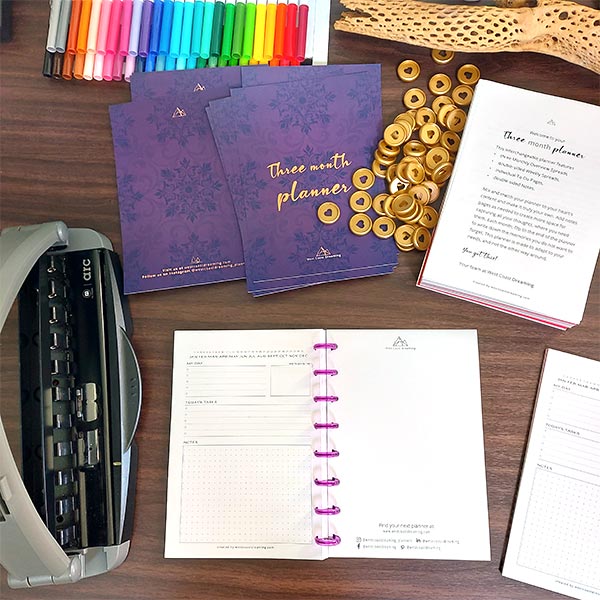
Goal setting can sometimes feel overwhelming, especially when you have multiple goals in different areas of your life. That’s where tools can be invaluable. Whether it’s a physical planner, a goal-tracking app, or a vision board, find a tool that resonates with you and helps structure and organization your goal-setting process. These tools will keep you focused, motivated, and on top of your game.
Summary
Turning your dreams into reality is within your reach. By following these five effective goal-setting strategies, you’ll gain clarity, set SMART goals, create actionable plans, maintain consistent progress, and utilize tools that provide structure and organization. As Bruce Lee once said, success is a journey, not a destination. Embrace the process, stay resilient, and let your dreams guide you toward the extraordinary life you deserve. Now, let’s start setting goals and making your dreams a reality!
Dream big, take action, and never stop believing in yourself.
Happy goal setting!
The West Coast Dreaming Team
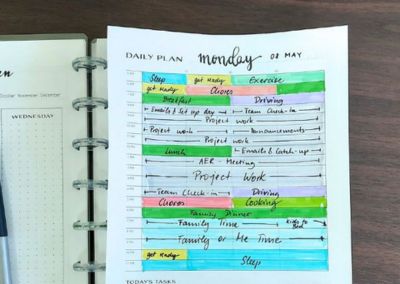
by Nikola | May 11, 2023 | An Organized Life, Bullet Journaling
Grab your free time-blocking e-book at the end of this post (includes printables!!). Click to take you there.
Time is our most precious resource, yet it often seems like there’s never enough of it. We’re constantly bombarded with distractions and interruptions that make it challenging to stay focused and get things done. That’s where time blocking comes in – it’s a powerful productivity technique that can help you take control of your time and use it more effectively. In this post, we’ll explore what time blocking is, how it works, and how to use it to achieve your goals and make the most of your time.

What is time blocking?
Time blocking is a technique that involves dividing your day into blocks of time and assigning specific tasks or activities to each block. By doing this, you can create a schedule tailored to your needs and priorities and ensure you’re using your time in the most productive way possible.
Why use time blocking?
There are many benefits to using this technique, including increased productivity, reduced stress, and improved work-life balance. Dividing your daily schedule into blocks of time can also help you prioritize your tasks, minimize distractions, and spend your time on the things that matter most to you.
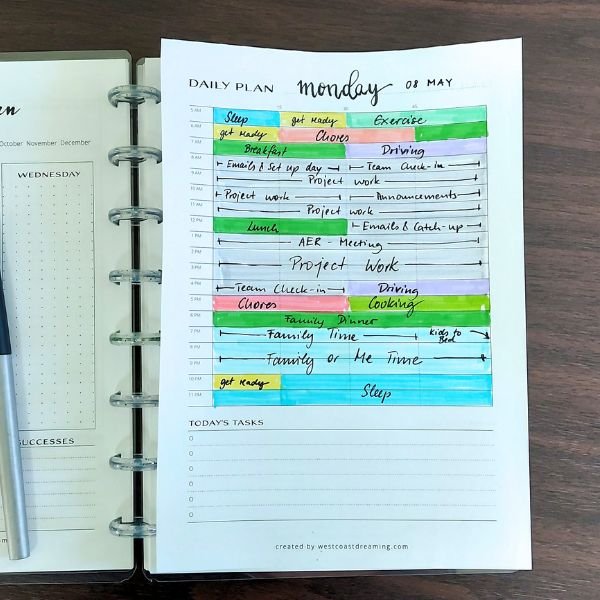
How to get started
Getting started is easy – all you need is a calendar or planner and a willingness to experiment and adjust your schedule as needed. If you want to make the most of your time, this method can be an incredibly effective strategy. First, set clear goals for yourself. This will give you a sense of direction and purpose and help you stay focused throughout the day. Next, identify your priorities so you know which tasks to tackle first. Finally, breaking your day into manageable time blocks of 15, 30 or 60 minutes can help you stay organized and on track. This allows you to work efficiently and avoid distractions, ultimately leading to greater productivity and success.
Tips for successful time blocking
While time blocking can be a powerful productivity tool, it does require some discipline and effort to make it work effectively. Effective time management requires setting achievable goals, being adaptable, and utilizing helpful software and tools to improve organizational skills. By implementing these key strategies, you can optimize your time management and quickly achieve your objectives. In addition, remember to prioritize tasks, take breaks when needed, and be flexible in adjusting your schedule. With these tips, you’ll be well on your way to mastering the art of time blocking and achieving success in your daily tasks.
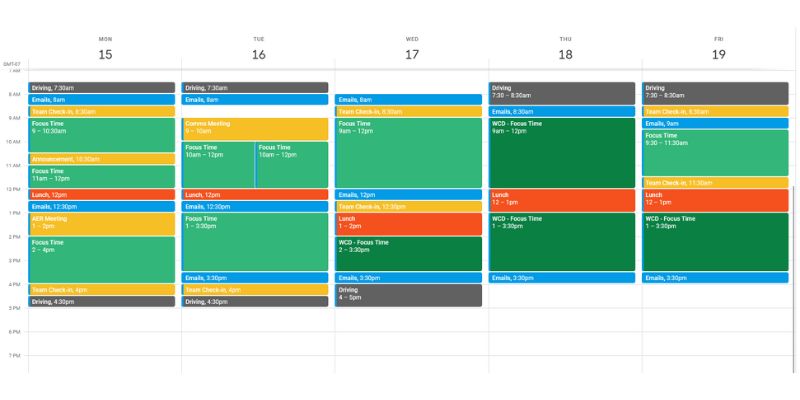
Common challenges and how to overcome them
Like any productivity technique, time blocking can have its challenges. Interruptions and distractions can quickly derail your schedule, making it difficult to stay on track. Be gentle with yourself, and remember to recognize that you are human and working on your goals and develop strategies to overcome your obstacles. One approach is scheduling time for interruptions and distractions, allowing you to address them without sacrificing productivity. Another method is eliminating or minimizing distractions by turning off notifications or finding a quiet workspace.
It is also common to underestimate the time it needs to complete a task. You’ll get better at estimating how long tasks take over time, but until you’ve honed your instincts, err on the side of blocking off too much time rather than too little. Instead, pad your schedule with extra time to complete and transition between tasks. You can even create “conditional blocks” of time you can tap into if you fall behind.
Try these tools
Find out how long it takes you to complete your tasks by tracking them with RescueTime or Toggl. Over time, this will improve your sense of much much time you should budget for in your daily or weekly plan.
By proactively addressing these challenges, you can maximize your time and stay focused on your goals.
Advanced time-blocking techniques
Once you’ve mastered the basics of time blocking, you can take your productivity to the next level. One such technique is “batching,” where you group similar tasks and complete them all at once. Another technique is “theme days,” where you assign specific themes to each day of the week and only work on tasks related to that theme on that day. These advanced techniques can help you stay focused and maximize your productivity, ultimately leading to greater success in both your personal and professional life.
Software and tools to improve your time-blocking skills
Various software and tools available can help with time blocking and organizational skills. One popular option is Trello, which allows users to create visual task boards and organize their to-do lists by priority and deadline. Another helpful tool is RescueTime, which tracks how much time you spend on various tasks and can help users identify areas where they may need to improve their time management. Additionally, apps like Focus@Will and Freedom can help eliminate distractions and enhance focus during designated time blocks. Ultimately, the best software and tools for time blocking will depend on individual preferences and needs, but these options are a great place to start.
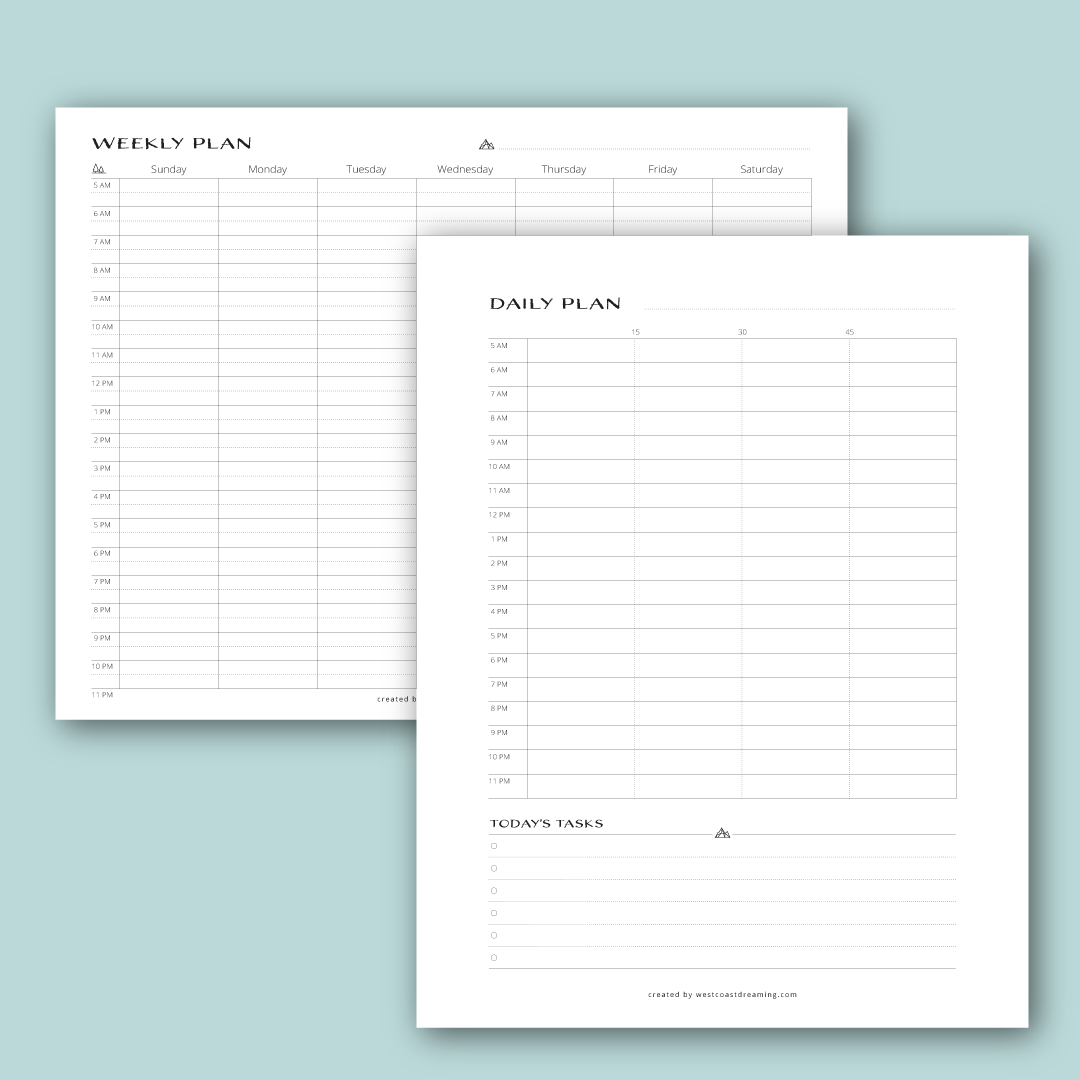
In addition to digital tools, planners and journals are popular choices for many people who prefer to have a physical record of their tasks and appointments. By writing down assignments and deadlines, users can better visualize their schedules and prioritize accordingly. Some people also find that physically writing down tasks can help them commit them to memory more effectively. Additionally, using coloured pens or stickers can help make the planner or journal more visually appealing and engaging. Ultimately, whether someone prefers digital or non-digital tools depends on their preferences and habits.
How long does it typically take to see the benefits?
The time it takes to see the benefits of time blocking can vary depending on several factors, including your current habits, the complexity of your tasks, and how effectively you implement the technique. However, with consistent practice and proper implementation, you can begin to experience the benefits of time blocking within a few weeks or even sooner. The process involves an initial adjustment period, followed by increased awareness and focus, improved productivity and time management, enhanced work-life balance and reduced stress. It’s important to note that individual experiences may vary, and consistency and perseverance are essential to fully realizing the benefits of time blocking.
Conclusion
Time blocking is a powerful tool that can help you take control of your time and achieve your goals. By following the tips and strategies outlined in this post, you can create a schedule that works for you and make the most of every minute of your day. So what are you waiting for? Start time blocking today and see the difference it can make in your life!
Free time-blocking e-book AND printables for you.

by Nikola | Apr 14, 2023 | Bullet Journaling
Whether you’re an artist, writer, or planner, having the right stationery, art and planner supplies can make a huge difference. Here are some of the reasons why you might want to invest in a selection of planner supplies, why we love stationery, and the best places to find all your stationery, planner supplies, and art supplies in Victoria, BC.
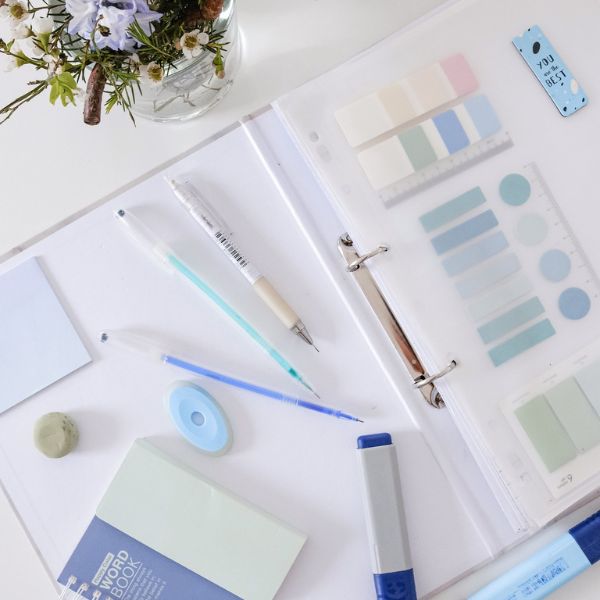
Do I need planner supplies to use my planner or journal effectively?
While it’s true that using a journal or planner can help you stay organized and on top of your tasks and goals, having the right supplies and stationery can make the experience even more enjoyable and effective.
If you are like me, you love a variety of writing materials, papers, pens, pencils, envelopes, stickers, washi tape, markers, and other related items.
Here are a few reasons why you might want to consider investing in more supplies and stationery for your journal or planner:
-
Customization: Having a variety of supplies, such as pens, stickers, and washi tape, allows you to customize your journal or planner to suit your style and preferences. This can make the experience more fun and engaging and help you stay motivated and committed to your goals.
-
Functionality: Using the right supplies, such as pens with different colours and tips, can help you organize your thoughts and tasks more effectively. For example, use a different colour for each category of tasks or a specific type of pen to prioritize your to-do list, tasks and appointments.
-
Inspiration: Using beautiful stationery and supplies can inspire your creativity and make journaling or planning feel more special. When you enjoy using your journal or planner, you’re more likely to stick with it and achieve your goals.
Of course, it’s okay not to have a ton of supplies and stationery at home to use a journal or planner effectively. However, having the right tools can make the experience more enjoyable, functional, and inspiring. So don’t be afraid to invest in a few extra supplies to enhance your journaling or planning experience.
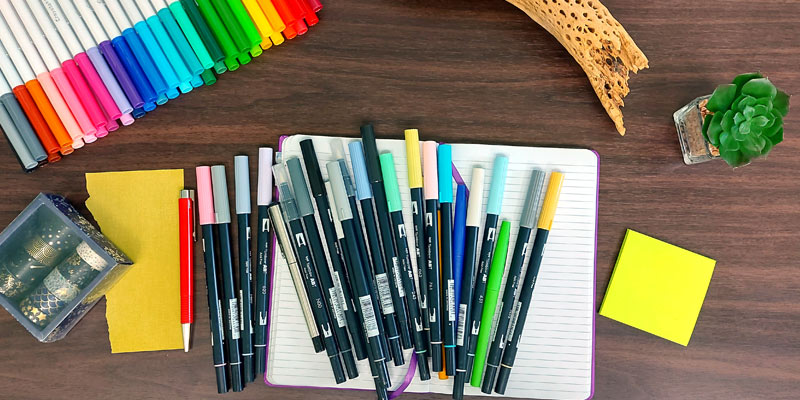
Why many People Love Stationery and Planner Supplies
- It’s a form of self-expression: Stationery allows people to express their personality through their choice of paper, pens, and other writing tools. For example, some people prefer colourful or patterned paper, while others prefer sleek and simple designs. The choice of planner supplies reflects one’s individual style and taste.
- It’s a form of art: Many people enjoy creating art or calligraphy with their stationery. They may experiment with different types of pens, inks, and paper to create unique designs and lettering styles. In addition, creative processes can be therapeutic and relaxing for some people.
- It’s nostalgic: For some people, stationery brings back memories of a simpler time when letter writing was a more common form of communication. So writing a letter on beautiful stationery can evoke nostalgia and sentimentality.
- It’s a gift: Stationery can be a thoughtful gift for someone who enjoys writing, drawing, or organizing. In addition, it can be customized to suit the recipient’s tastes and preferences, making it a thoughtful and personal gift.
Where to buy stationery in Victoria?
Whether you are visiting or a local, and, depending on what you’re looking for, here are a few options in Victoria that suit your journal and planner needs.
- Monk Office & Art, formerly known as Island Blue Art & Framing: Monk Office & Art is a locally owned family business providing products and services to Vancouver Island’s creative and business communities and beyond. They offer a wide selection of art supplies, including paints, brushes, canvases, and more. They also have a great selection of stationery and planner supplies, including notebooks, journals, and pens.
- Opus Art Supplies: Opus Art Supplies is a chain of art supply stores with a location in Downtown Victoria. They offer a wide selection of art supplies, including paints, brushes, canvases, and more. They also have a great selection of stationery and planner supplies, including notebooks, journals, and pens.
- Munro’s Books: Munro’s Books is a locally owned and operated bookstore that has been a Victoria institution since 1963. They have a great selection of books, including art books and journals. They also carry a small selection of stationery and planner supplies, including notebooks and pens.
- Russell Books: Russell Books is another locally owned and operated bookstore in Victoria that has been around since 1991. They have a great selection of books, including art books and journals. They also carry a small selection of stationery and planner supplies, including notebooks and pens.
- The Papery: The Papery is a stationery store in downtown Victoria that offers a wide selection of stationery and planner supplies, including notebooks, journals, pens, and more. They also carry a small selection of art supplies, including pens and markers.
- Michael’s: Michael’s is a chain of craft stores with a location in Victoria in the Uptown Mall. They offer a wide selection of art supplies, including paints, brushes, canvases, and more. They also have a large selection of stationery and planner supplies, including notebooks, journals, and pens.
Whether you’re an artist, writer, or planner enthusiast, there are plenty of great reasons and places to find stationery and art supplies in Victoria, BC. From locally owned bookstores to chain craft stores, there’s something for everyone. So go out and find the perfect notebook, pen, or paintbrush to inspire your creativity and keep you organized. And if you haven’t seen our post on how to get started with a bullet journal, check out our How to Start a Bullet Journal post.
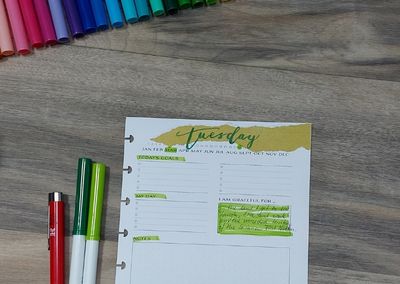
by Nikola | Mar 22, 2023 | Bullet Journaling
Planning your goals with a bullet journal or planner has become increasingly popular in recent years as a way to keep track of tasks, events, and notes in an organized and creative manner. However, even the most organized and careful journalers may need to correct mistakes from time to time. Errors can be frustrating to deal with, whether it’s a misspelled word or a misplaced line or point. But fear not! In this blog post, we’ll discuss some tips on how to fix mistakes in a bullet journal.
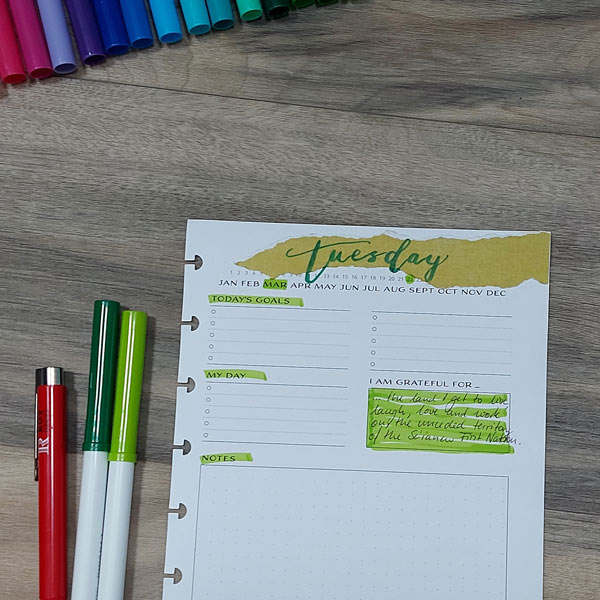
Tip #1: Cover Up – Use Craft Paper, Correction Tape or Whiteout
One of the simplest ways to fix a mistake in a bullet journal is to use correction tape, whiteout or a piece of paper. Cover Ups allow you to hide the mistake and try again. Grab a colourful piece of paper and get creative on your page. You can add even more of these pieces to give your page a distinctive look. These options are quick and easy, but keep in mind that they may leave a noticeable mark on the page.
Tip #2: Cross It Out and Rewrite
Another option is to cross out the mistake and rewrite the correct information next to it. This quick and easy fix doesn’t require additional materials, but it may not be the most aesthetically pleasing option.
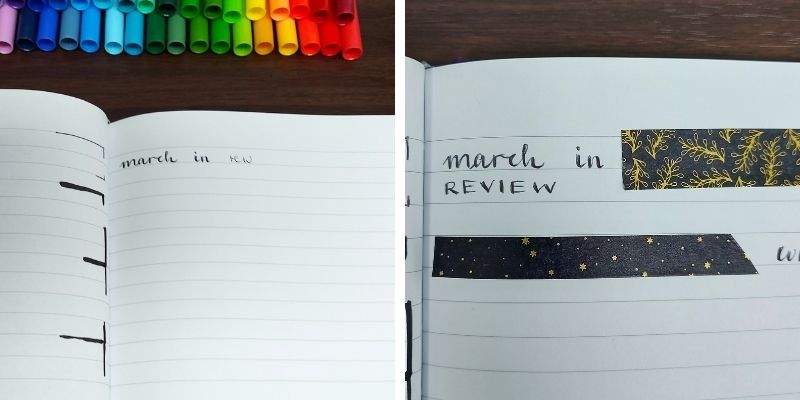
Tip #3: Use Washi Tape or Stickers
If you’re looking for a more creative way to fix a mistake in your bullet journal, consider using washi tape or stickers. Washi tape is a decorative tape that you can use to cover up blunders or add visual interest to your pages. You can also use stickers or add decorative elements to your bullet journal. This option is not only functional but also adds some personality and flair to your pages.

Tip #4: Add pages to your Bullet Journal
When you are creating your spreads ahead of time, your mind might wander from time to time. For example, after beautifully lettering the following weekday, you suddenly realize that you forgot a day in between. So simply add a page to your journal and get creative with the additional room you gained.
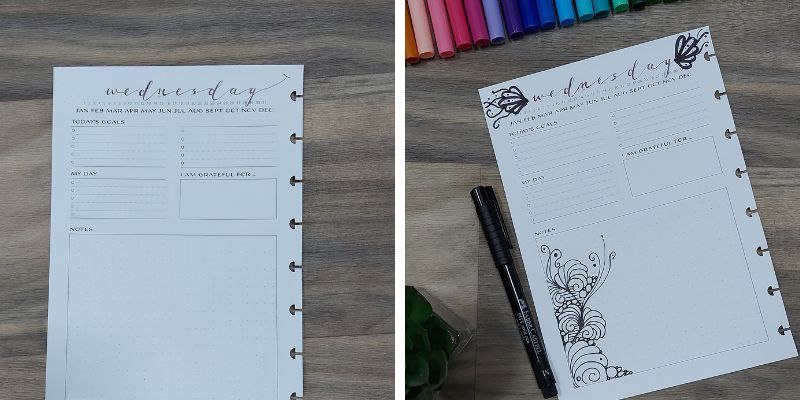
Tip #5: Make Something New
It can happen all too easily when drawing lines or planning on a nice flourish to end a word with, and the line goes not where it is intended to go. Embrace it and make something new. A favourite go-to is to doodle or to draw around it and incorporate the wayward line into an intricate new design element.
Tip #6: Embrace Imperfection
Finally, remember that mistakes are a natural part of the bullet journaling process, and it’s okay to have some imperfections in your planner or journal. You can even use mistakes as an opportunity to add some character to your pages. For example, you could doodle around a mistake or turn it into a funny anecdote. So don’t be too hard on yourself for making mistakes – embrace them and make the most of them!
In conclusion, fixing mistakes in a bullet journal is a simple process that can be done using a variety of techniques. Whether you prefer a quick fix or a more creative solution, plenty of options are available to help you fix mistakes in your bullet journal. Remember to embrace imperfection and enjoy the process of creating a personalized and unique journal that reflects your personality and interests.
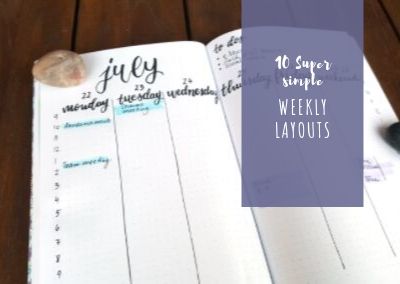
by Nikola | Jul 17, 2019 | Bullet Journaling
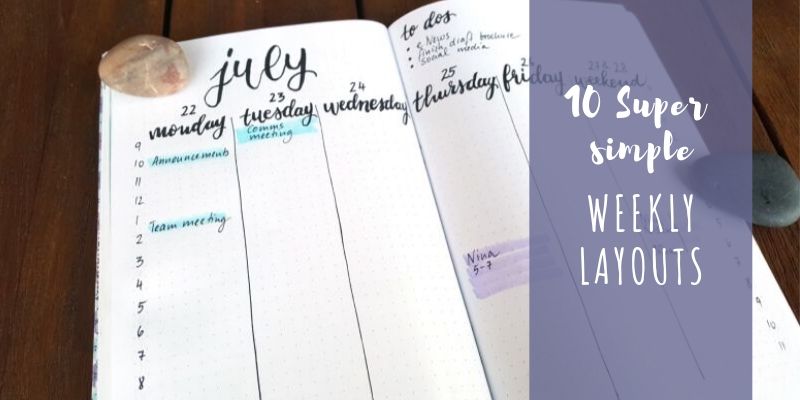
A good weekly spread is the backbone of your bullet journal and will probably either make or break the habit. If you find them too complicated or tedious, it will be hard to keep at it. If you are not happy with the way they look or how creative you can get or the space you have to express your thoughts, you might get discouraged and not stick to your new ritual. . How to get it right? Well, find a set of layouts that you like and understand your needs and goals. Are you a minimalist, the creative type, do you delve in watercolour, or do you want to explore them all? Check out these 10 super simple weekly layouts for your bullet journal and decide for yourself what suits your needs best.
Horizontal
In my experience, I have found the horizontal spreads to be the best if you prefer to jot down memories. The horizontal format gives you the space to write short sentences or bullets, and, depending on the size of your journal and handwriting, leave room for creative space.
In the next four spreads, you will see the same theme in four different varieties. Same basic layout, four entirely different looks.
The minimalist
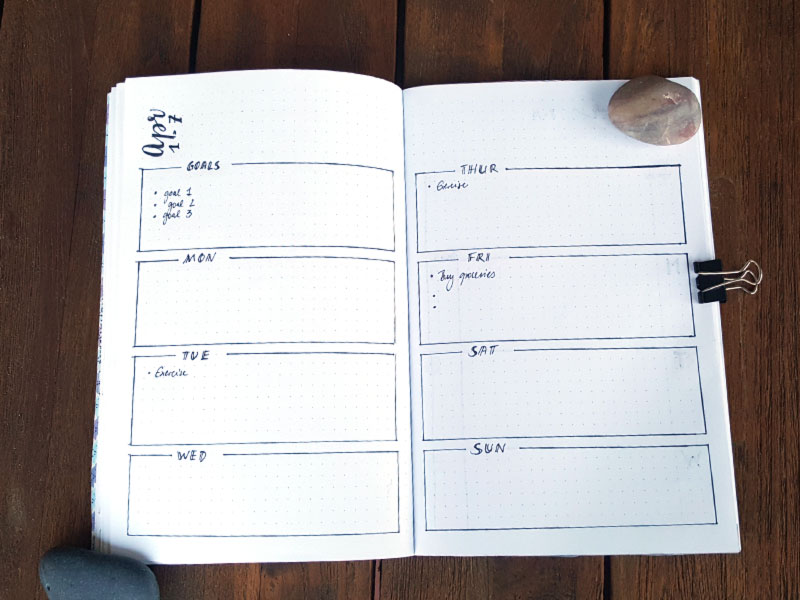
Boxes denote the space for your weekly goals and each day. Instead of boxes, you can choose lines, or separate the daily space with the day of the week in your favourite brush lettering font.
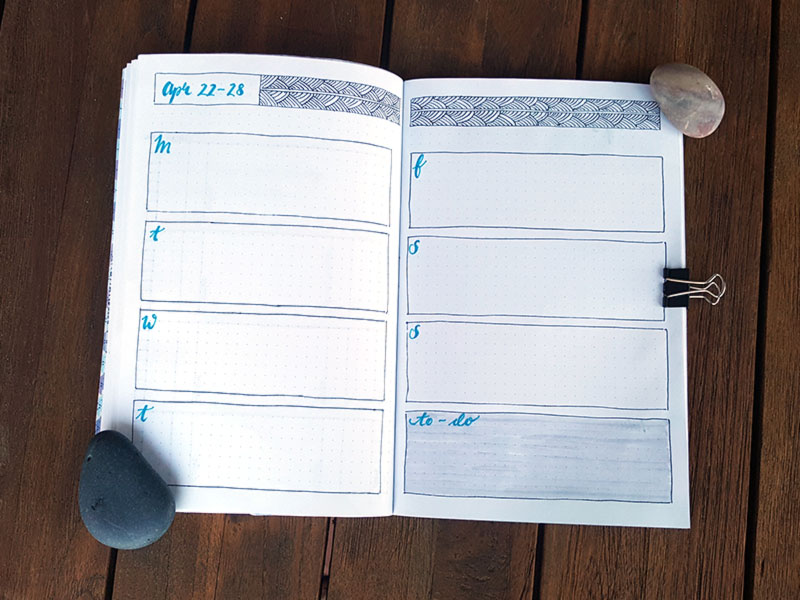
You could try the same format, boxes and all and add some tangle patterns as a design element? Doesn’t take long and creates a distinct look for that particular week. Find the instructions to this pattern in my tangle pattern post.
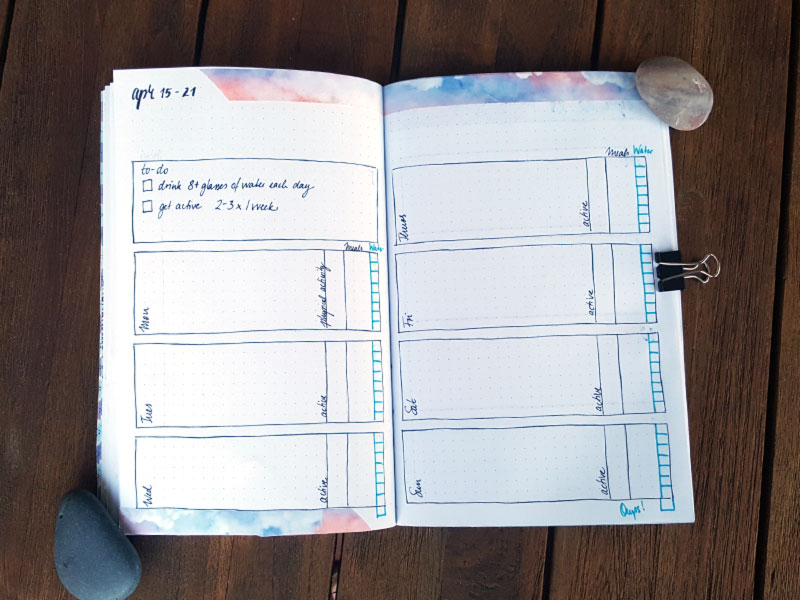
Again, I used the same format again, this time added some fancy washi tape and created room to track water intake, meals and active time.
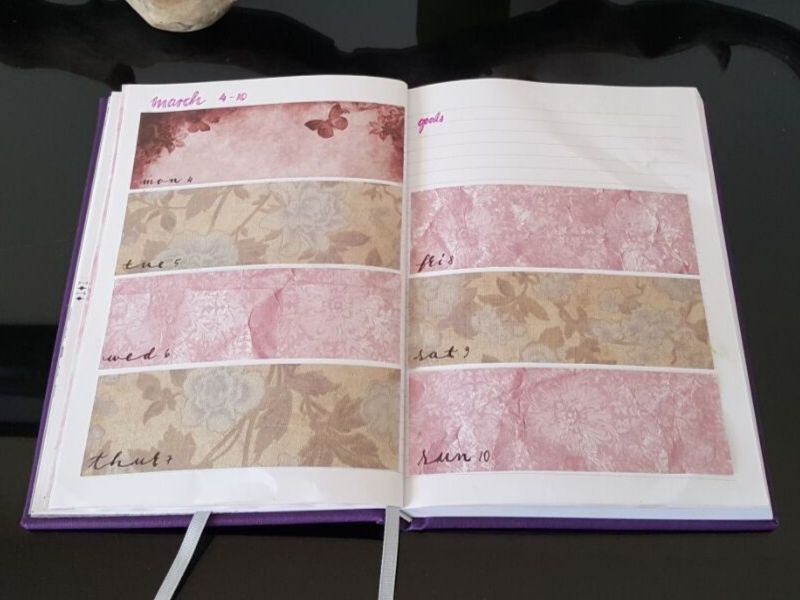
If you have some lightly coloured craft paper, you can also use this to create a stunning spread using the same structure.
How to deal with the tail end of the month?
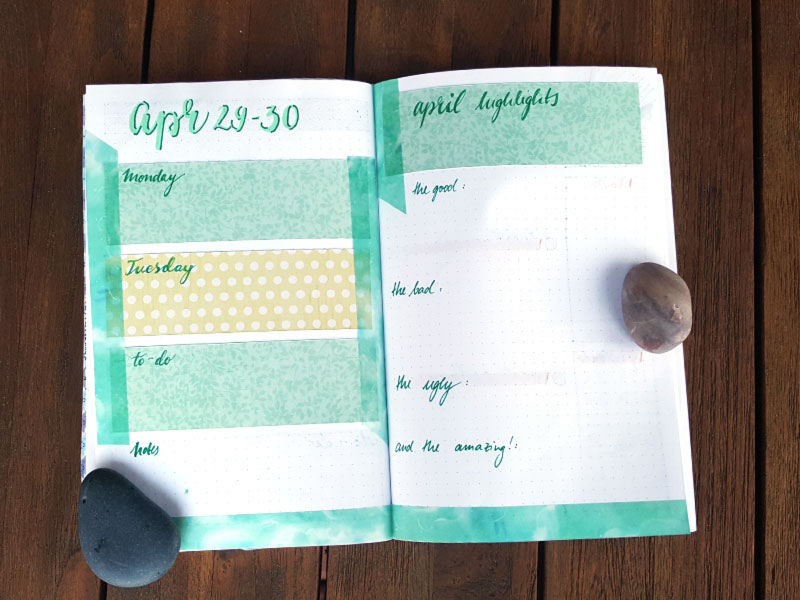
What to do with the end of the month? How do deal with the gaping white space that needs to be filled? First of all, don’t panic. As I learned in design school “Don’t be afraid of white space. The page elements need this space to breathe.” Secondly, I started to use the extra space for either some creative outlet or a mini reflection on the month. This will help you greatly when you do your year-end reflection. The more you make yourself aware of what happened each month, the less often you look back at the past year not remembering how it went by so fast. No more blank spots and more memories which all in all help you perceive time to progress a little slower.
Weekly spread with habit trackers
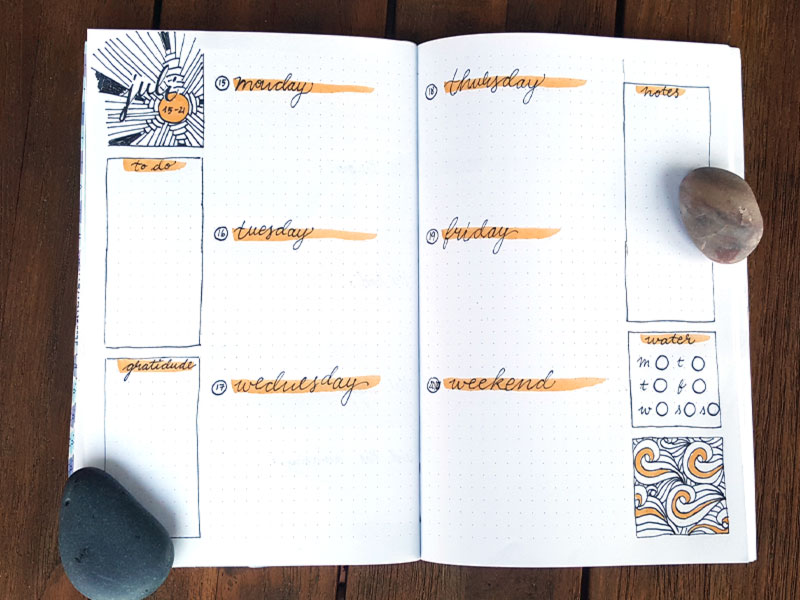
Ok, we have finally left the same-old horizontal pattern behind and added creative and tracking spaces to the sides.
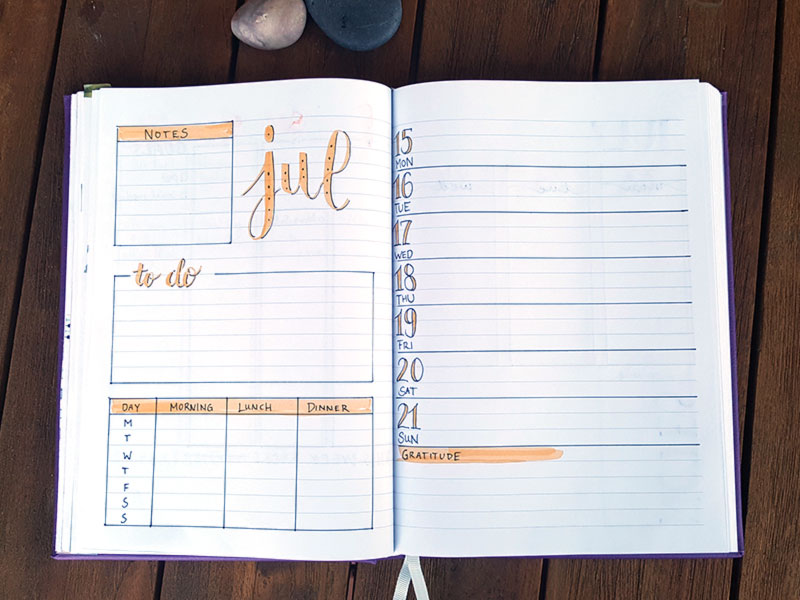
This is a weekly spread one-pager that tags on a page with goals, trackers or whatever you want to add to your page. Not to forget space to give gratitude, my favourite tool to staying mindful, and appreciative of the blessings in my life.
Vertical weekly layouts for your journal
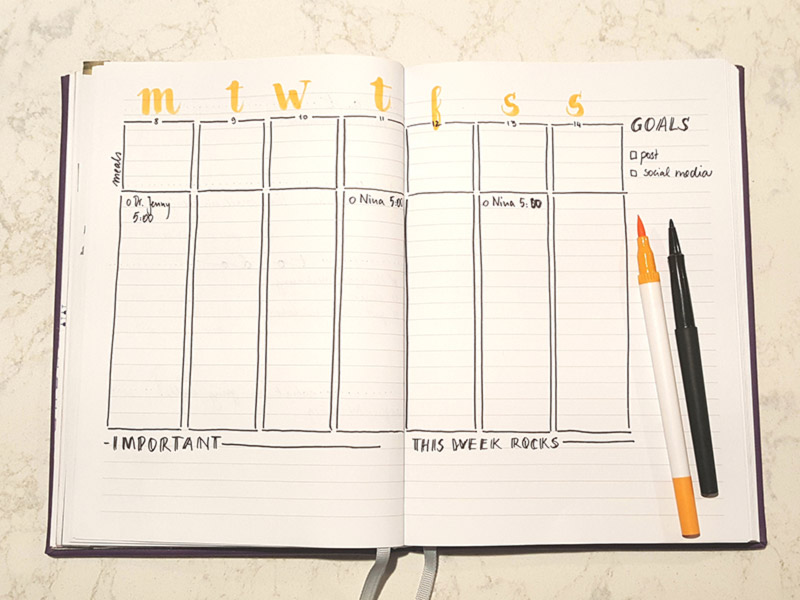
The vertical layout is ideal if you want to highlight your appointments, and jot down simple notes. It is the perfect way to gain an overview of your week.
In the simple weekly layout above I decided to hand-draw my lines, which give the page a distinct freestyle look. See the spread below that features accurate boxes which I drew using a ruler.
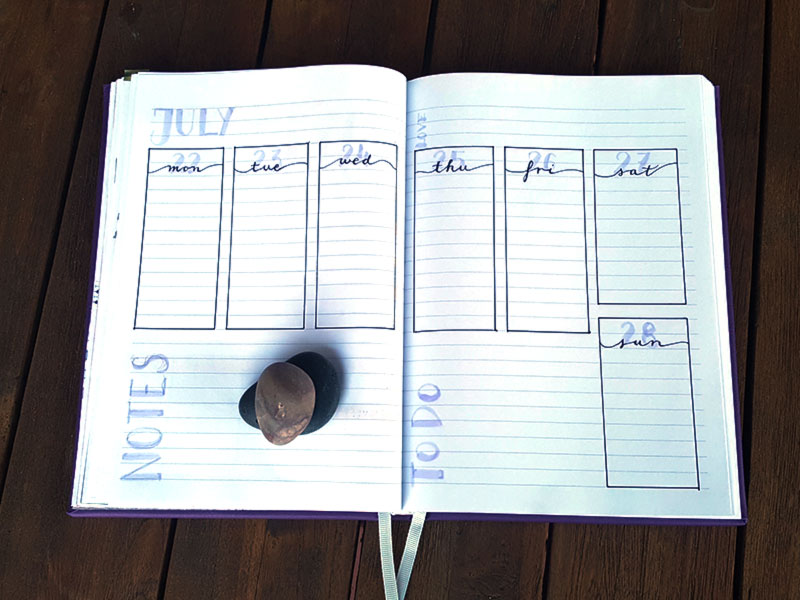
This layout provides lots of space for notes or trackers while clearly structuring your week. I love the simplicity and contrasting beauty of the black cursive versus rigid grey lettering.
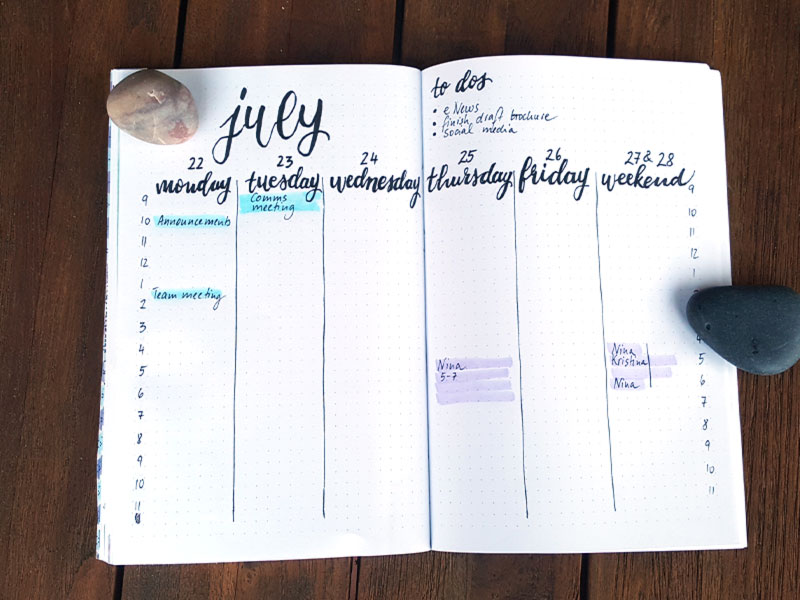
This layout focuses on giving you an hourly overview of your day. It could also be used to track how you spend your time and see where there are “pockets” of time that you could use more efficiently.
Whether you are a seasoned bullet journaler and already have your favourites, or are are about to find your style, it is always fun to try out something you don’t usually do. What I love about journaling is that I can fit it exactly to my needs. If I am feeling minimalistic, i’ll go after that style. If I need to focus on tracking anything, in my case usually water intake, goals, gratitude and exercise, I can do that. Care to share which weekly layout you prefer for your bujo?

































